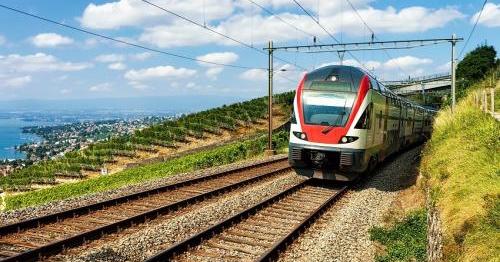Are you curious to know what is land transport? You have come to the right place as I am going to tell you everything about land transport in a very simple explanation. Without further discussion let’s begin to know what is land transport?
Land transport, often referred to as ground transportation, is the backbone of the modern world’s connectivity. It encompasses a vast network of roads, highways, railways, and pipelines that facilitate the movement of people, goods, and services across the globe. From the bustling streets of urban cities to the remote rural areas, land transport plays a crucial role in shaping economies, societies, and our daily lives. In this blog, we will explore the concept of land transport, its various modes, its significance, and the challenges and opportunities it presents in the 21st century.
What Is Land Transport?
Land transport refers to the movement of people, goods, or materials on the Earth’s surface. It is one of the oldest and most widely used modes of transportation, dating back to ancient times when humans first used animals and carts to carry loads. Over the centuries, land transport has evolved significantly, integrating sophisticated technologies and infrastructure to facilitate faster, safer, and more efficient travel and trade.
Modes Of Land Transport:
Land transport encompasses various modes, each serving specific purposes and requirements:
- Road Transport: Road transport involves the movement of people and goods on paved or unpaved roads. It is the most common mode of land transport, utilizing vehicles such as cars, buses, trucks, and motorcycles.
- Rail Transport: Rail transport operates on fixed tracks and involves the use of trains to transport passengers and freight. It is an efficient mode for long-distance travel and the movement of bulky goods.
- Pipeline Transport: Pipeline transport involves the use of pipes to carry liquids and gases, such as oil, natural gas, and water, over long distances.
Significance Of Land Transport:
The significance of land transport in today’s world cannot be overstated:
- Connectivity: Land transport connects communities, cities, and regions, fostering economic growth and cultural exchange.
- Trade and Commerce: It enables the movement of goods and materials, supporting trade and commerce on both local and global scales.
- Passenger Mobility: Land transport allows people to commute to work, travel for leisure, and access essential services.
- Supply Chain: It forms an integral part of supply chains, facilitating the timely delivery of goods from manufacturers to consumers.
Challenges And Opportunities:
While land transport has revolutionized connectivity, it also faces several challenges in the 21st century:
- Congestion: Rapid urbanization and population growth have led to traffic congestion in many cities, impacting efficiency and air quality.
- Environmental Impact: Land transport is a significant contributor to greenhouse gas emissions and air pollution, necessitating a shift towards sustainable transportation options.
- Infrastructure Investment: Developing and maintaining robust transportation infrastructure requires substantial investment and long-term planning.
- Technological Advancements: Innovations such as electric vehicles, autonomous driving, and smart transportation systems offer opportunities for more sustainable and efficient land transport.
Conclusion:
Land transport is an indispensable pillar of modern civilization, connecting people, goods, and ideas across vast distances. From bustling highways to intricate rail networks, it enables seamless mobility and drives economic growth and development. However, as we navigate the challenges of congestion, environmental impact, and technological advancements, it is essential to prioritize sustainable and efficient transportation solutions. By investing in modern infrastructure, promoting public transport, and embracing emerging technologies, we can create a future where land transport continues to be a catalyst for progress, accessibility, and global connectivity. As we move forward on this journey, the roadways of land transport will remain a symbol of our shared human endeavor to bridge distances and build a better world.
You can collect more information on Getdailytech
FAQ
What Do You Mean By Land Transport?
‘Land transport’ covers all land-based transportation systems that provide for the movement of people, goods and services, and includes the following: road networks from the state highways to local roads. rail networks. provisions for pedestrians and cyclists.
What Are The 4 Types Of Transportation?
What are the Top Modes of Transport. Air, Road, Sea and Rail. These are the four major modes of transport (or types) in the logistics industry.
What Are The 3 Types Of Transportation?
Transport modes are the means supporting the mobility of passengers and freight. They are mobile transport assets and fall into three basic types; land (road, rail, pipelines), water (shipping), and air.
What Is The Importance Of Transportation?
Transportation ensures extending of trade and network. The improvement and reforms in the transport sector enhance the dynamicity of freight and passengers in a region. With efficient roads and means of transport in place, industries and markets also develop.
I Have Covered All The Following Queries And Topics In The Above Article
What Is Land Transport
What Is Land Transport For Class 1
What Is Land Transport For Class 2
What Is Land Transport For Class 3
What Is The Land Transport
What Is Land Transport For Class 4
What Is The Means Of Land Transport
What Is Land Transport?
What Is Land Transport For Kids
What Is A Land Transport
What Is Transport Land Use
What Is Land Transport Definition
What Is The Difference Between Land And Air Transport
What Is The Meaning Of Land Transport
What Is The Fastest Means Of Land Transport
What Is Land Transport
What is land transportation?










